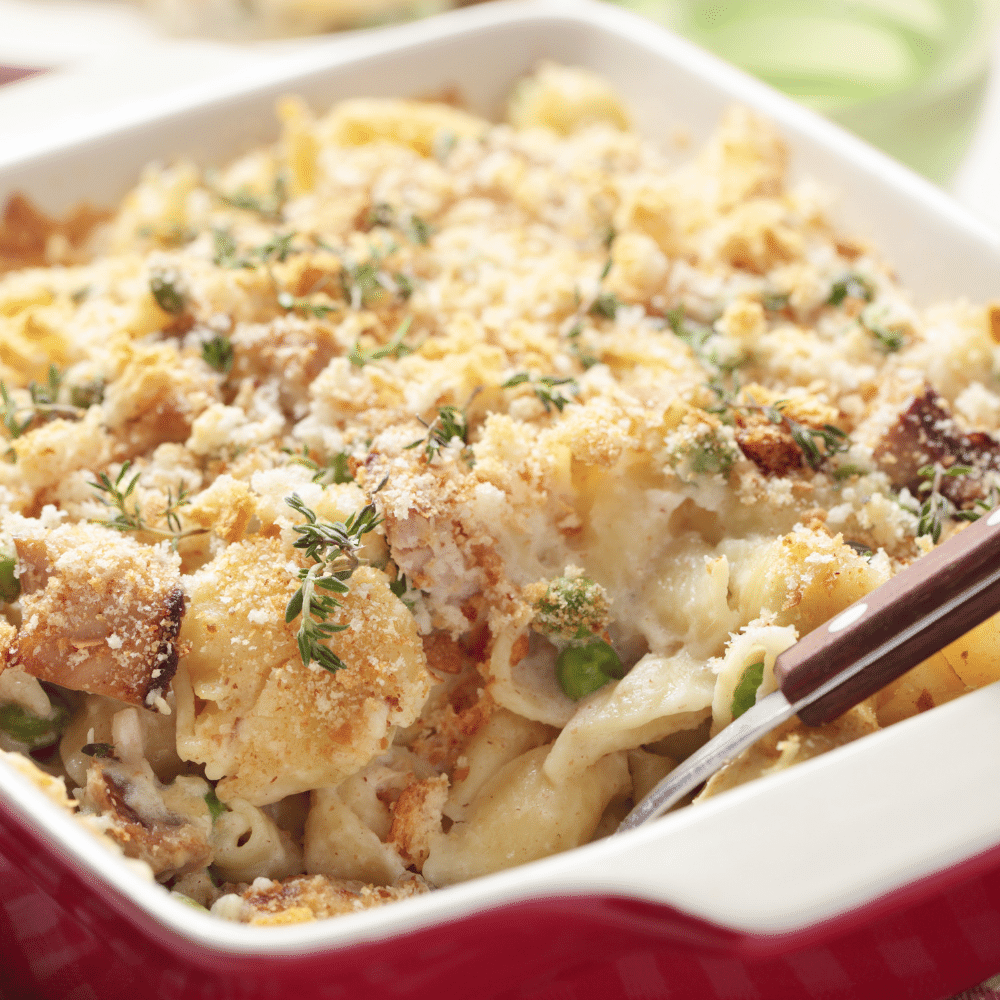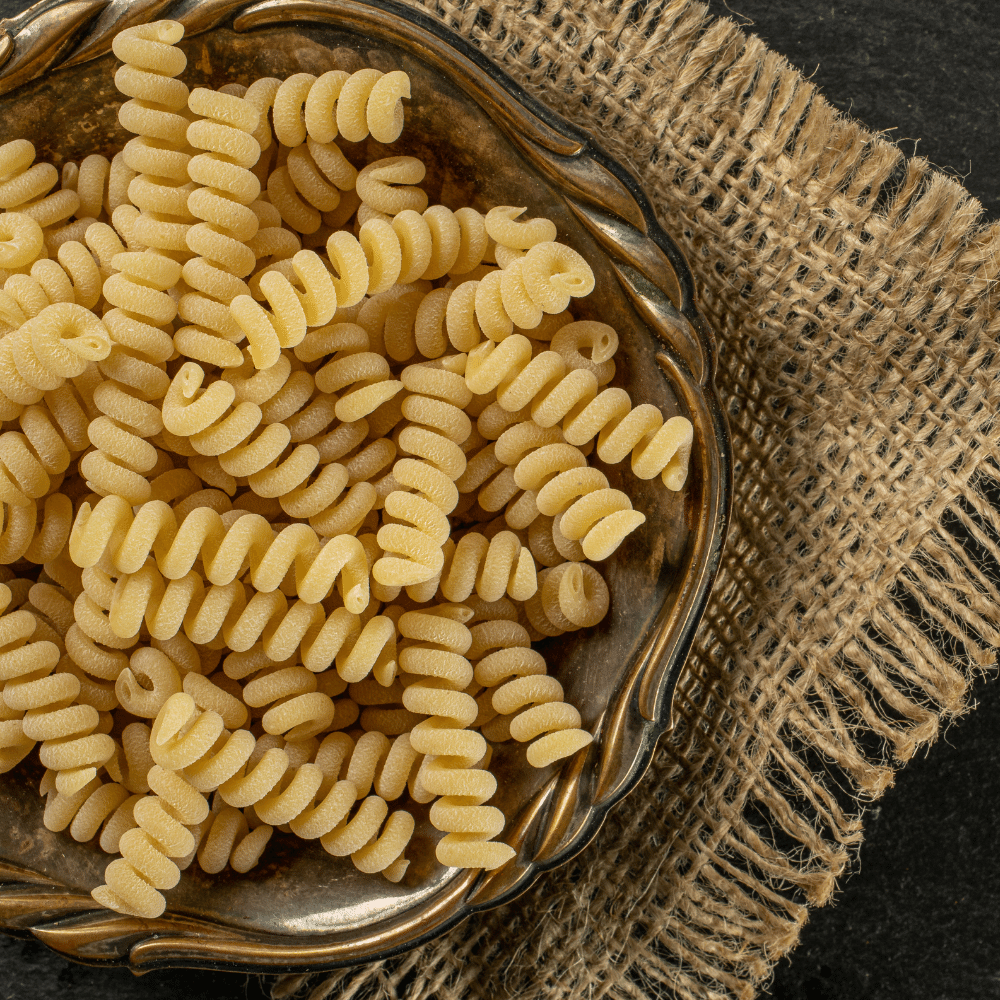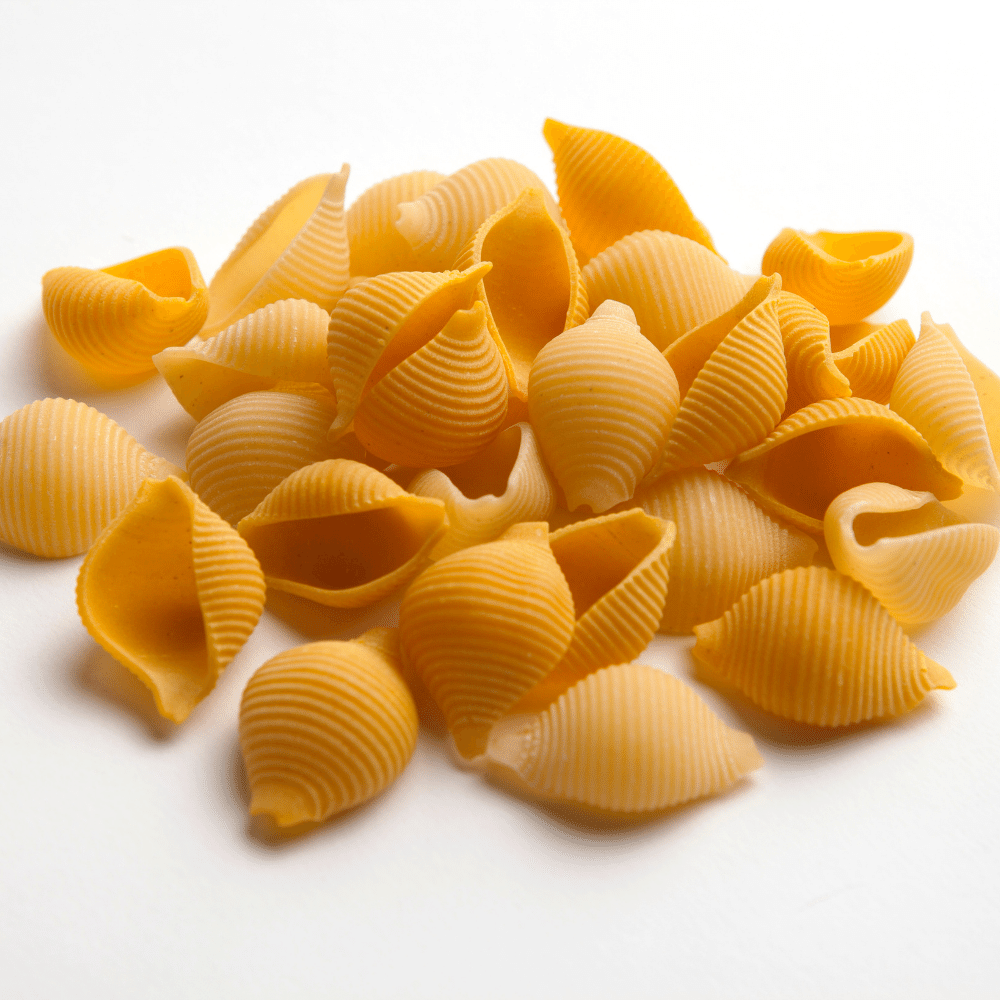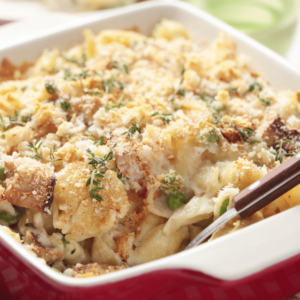Do you love tuna casserole but want to switch up the type of pasta you use?
If so, this article is for you!
Tuna casserole is a classic dish that can be made with almost any type of pasta.
But some noodles work better than others when it comes to creating a delicious and hearty meal.
In this article, I’ll discuss five types of pasta that are perfect for making tuna casserole.
From macaroni and penne to rotini and shells, I’ll cover all the bases so that you can make the best possible version of this classic comfort food.
Read Also:
- Tuna Casserole Wine Pairing – Best Wines for Tuna Casseroles
- Tuna Wine Pairing – The Best Wines for Tuna Meals
- What To Do With Leftover Tuna Casserole (10 Tasty Ideas)
What is Tuna Casserole?

Tuna casserole is a classic comfort food dish that typically consists of canned tuna, egg noodles, and a creamy sauce.
It is often topped with cheese or breadcrumbs for added flavor and texture.
The dish can be made in one pot on the stovetop or baked in the oven.
Tuna casserole has been around since at least the 1940s when it was popularized by Campbell’s Soup Company as an easy-to-make meal using their canned cream of mushroom soup.
Since then, many variations have emerged including adding vegetables such as peas or carrots, substituting different types of pasta like macaroni or shells, and swapping out the cream of mushroom soup for other sauces like white wine sauce or Alfredo sauce.
The beauty of tuna casserole lies in its versatility; you can make it your own by adding whatever ingredients you have on hand to create a delicious dinner that everyone will love!
The 5 Best Kinds of Pasta for Tuna Casserole
Tuna casserole is a classic meal that can be made with many different types of pasta.
Here are five kinds of pasta that work especially well in tuna casseroles, giving it just the right texture and flavor:
1. Fusilli

Fusilli is a type of pasta that is shaped like a corkscrew or spiral.
It comes in both short and long varieties, with the long variety being more common.
The shape of fusilli makes it ideal for dishes like tuna casserole because it can hold onto sauces and other ingredients better than other types of pasta.
- Varieties: There are several different varieties of fusilli available, including whole wheat, gluten-free, and even colored versions made from vegetables like spinach or tomato. You can also find flavored versions such as garlic-infused or herb-infused fusilli.
- Tips & Tricks: When making tuna casserole with fusilli, make sure to cook the pasta al dente so that it holds its shape when mixed with the sauce and other ingredients. Also be sure to add enough liquid to the dish so that all of the ingredients are well coated; this will help ensure an even distribution of flavor throughout your dish. Finally, don’t forget to season your dish generously with salt and pepper before serving!
2. Penne

Penne is a type of pasta that is shaped like cylindrical tubes with angled ends.
It is one of the most popular types of pasta and can be found in many different shapes, sizes, and colors.
The name comes from the Italian word for “pen,” which refers to the shape of the pasta.
- Varieties: Penne comes in several varieties including regular penne, whole wheat penne, gluten-free penne, spinach penne, tomato basil penne, and more. Each variety has its own unique flavor profile that pairs well with different sauces and ingredients.
- Tips & Tricks: When making tuna casserole with penne it’s important to cook the pasta al dente (slightly undercooked). This will help ensure that it doesn’t become too mushy when baked in the oven. Additionally, you may want to add some extra seasonings such as garlic powder or onion powder to give your dish an extra kick of flavor!
3. Rotini

Rotini is a type of pasta that is shaped like a corkscrew or spiral.
It has ridges on the outside and grooves on the inside, which helps it to hold onto sauces and other ingredients.
It’s available in both white and whole wheat varieties, making it an excellent choice for those looking for a healthier alternative to traditional white pasta.
- Varieties: There are many different types of rotini available in stores today, including gluten-free options made from rice flour or quinoa flour. You can also find flavored varieties such as spinach, tomato, garlic, and even cheese-filled rotini.
- Tips & Tricks: When cooking with rotini, be sure to use plenty of water so that the pasta doesn’t stick together while boiling. Also make sure you add enough salt to the water; this will help bring out the flavor of your dish. Finally, don’t forget to reserve some of the cooking liquid before draining; this will help keep your sauce from becoming too thick when added back into the pot with your cooked rotini.
4. Rigatoni

Rigatoni is a type of pasta that is shaped like large tubes with ridges on the outside.
It’s usually about an inch in diameter and has a hollow center, making it perfect for holding sauces.
The ridges also help to trap pieces of vegetables or other ingredients, which makes it great for casseroles and baked dishes.
- Varieties: There are many varieties of rigatoni available, including whole wheat, gluten-free, and even spinach-flavored versions. You can also find different shapes such as penne or ziti if you prefer those over traditional rigatoni.
- Tips & Tricks: When making tuna casserole with rigatoni, be sure to cook the pasta al dente so it doesn’t become mushy when baking in the oven. Also, make sure to use enough sauce so that all the noodles are coated; otherwise they may dry out during baking. Finally, don’t forget to top your casserole with cheese before baking—it will add flavor and texture!
5. Shells

Shells are a type of pasta that is shaped like a shell or cone.
They come in various sizes, from small to large, and can be made from different types of flour such as semolina, durum wheat, or even whole wheat.
- Varieties: There are many varieties of shells available on the market today. Smaller shells such as conchiglie and lumache are great for soups and salads while larger shells like rigatoni and paccheri work well with heavier sauces. Whole wheat shells offer more nutritional benefits than traditional white flour-based pastas but may not hold up as well when cooked in casseroles.
- Tips & Tricks: When making tuna casserole with shells, it’s important to cook the pasta al dente—not too soft or too crunchy—so that it holds its shape during baking. To ensure this happens, follow the instructions on the package carefully and don’t overcook the pasta before adding it to your dish. Additionally, make sure you add enough liquid (such as milk or broth) so that all ingredients are fully covered; otherwise, your casserole will be dry after baking!
Conclusion
In conclusion, pasta is the perfect ingredient for tuna casserole.
It serves as a hearty base for the dish and is full of delicious flavors.
The best kinds of pasta for tuna casserole are fusilli, penne, rotini, rigatoni, and shells. Each of these shapes has its own unique texture and flavor, and they all work well together to create a rich and flavorful casserole.
Using these types of pasta for your tuna casserole will ensure that everyone enjoys a delicious meal, and it will add a new layer of flavor to your dish.

The 5 Best Kinds of Pasta for Tuna Casserole
Ingredients
- Fusilli
- Penne
- Rotini
- Rigatoni
- Shells
Instructions
- Pick your favorite type of pasta from this list to add to your tuna casserole recipe.
- Prepare the rest of your meal, and enjoy!
Jenny has always been passionate about cooking, and she uses her platform to share her joy of food with others. Her recipes are easy to follow, and she loves giving tips and tricks to help others create their own unique culinary creations.

